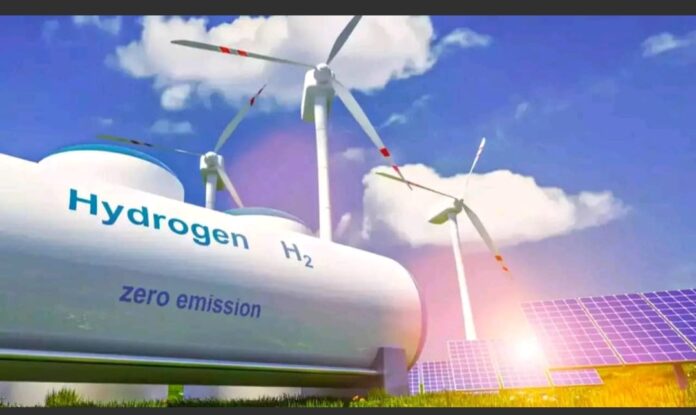India is embarking on an ambitious journey towards a sustainable and greener future by placing a strong emphasis on green hydrogen. Recognizing the immense potential of this clean energy source, India has set a target through its National Green Hydrogen Mission to establish a robust green hydrogen ecosystem and achieve a production capacity of at least 5 million metric tons (MMT) per annum by 2030. This ambitious endeavor has the potential to revolutionize India’s energy landscape, reduce its dependence on fossil fuels, mitigate climate change, and unlock numerous economic opportunities.
Driving Factors (200 words): Several factors drive India’s focus on green hydrogen as a game-changing solution. First and foremost is the issue of energy security and independence. As a rapidly growing economy with an increasing energy demand, India has long been reliant on imported fossil fuels, leaving it vulnerable to price volatility and supply disruptions. By embracing green hydrogen, India aims to diversify its energy sources and establish a secure and self-sufficient energy ecosystem.
Climate change mitigation is another significant factor. The urgent need to combat climate change has prompted nations worldwide to seek cleaner alternatives to fossil fuels. Green hydrogen, produced through electrolysis powered by renewable energy sources, stands out as a carbon-neutral solution. India’s commitment to reducing greenhouse gas emissions aligns with its international obligations under the Paris Agreement, and green hydrogen offers a promising pathway to achieve these targets.
Moreover, green hydrogen plays a crucial role in integrating renewable energy sources. Solar and wind power, while renewable, are intermittent in nature. Green hydrogen acts as a versatile energy carrier, enabling the storage and utilization of excess renewable energy during peak production periods. This enhances grid stability, promotes the widespread adoption of renewable energy, and addresses the intermittency challenge.
Additionally, green hydrogen enables decentralized energy generation. India possesses abundant renewable energy potential, but it is geographically dispersed. Green hydrogen facilitates localized energy production and consumption, empowering communities, industries, and rural areas to become self-sufficient in energy generation. This decentralization fosters economic growth, improves energy access, and reduces transmission losses.
Economic Opportunities (200 words): The pursuit of green hydrogen in India presents significant economic opportunities. The development of a robust green hydrogen industry creates employment across the value chain. From research and development to manufacturing, installation, and maintenance of hydrogen infrastructure, there is a potential for job creation. The establishment of skill development programs ensures a skilled workforce proficient in clean energy technologies, driving India’s goal of becoming a global hub for green hydrogen innovation.
Moreover, green hydrogen enables industrial transformation. By replacing fossil fuels in various sectors such as transportation, manufacturing, and agriculture, green hydrogen can lead to substantial emissions reductions and environmental improvements. This transition aligns India’s industrial sector with global sustainability standards, fostering innovation and competitiveness.
Investment and Policy Support (200 words): India recognizes that a conducive policy environment and investment are crucial to accelerate the growth of green hydrogen. The National Green Hydrogen Mission provides a comprehensive framework with policy guidelines, financial incentives, and a regulatory roadmap to attract domestic and international investments. It encourages public-private partnerships, collaborations, and technology transfers to facilitate the development and deployment of green hydrogen technologies.
The government’s support extends to research and development initiatives, including funding for projects, pilot demonstrations, and technology advancements in green hydrogen production, storage, and utilization. It also encourages academia-industry partnerships to foster innovation and expertise.
India is actively engaging in international collaborations to leverage global expertise, knowledge sharing, and technology transfer in the green hydrogen sector. Partnerships with countries at the forefront of green hydrogen development and international organizations are aimed at accelerating India’s transition to a green hydrogen economy.




